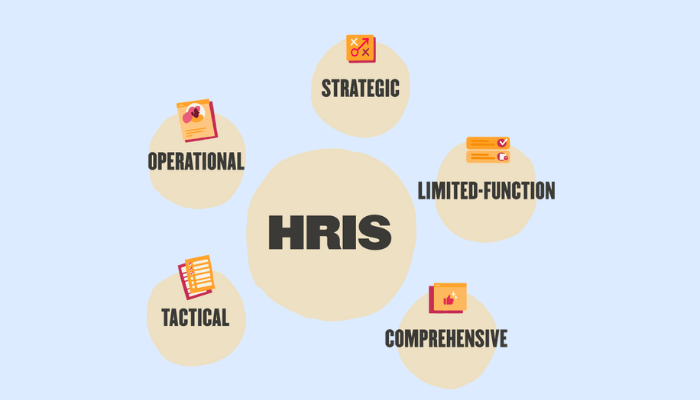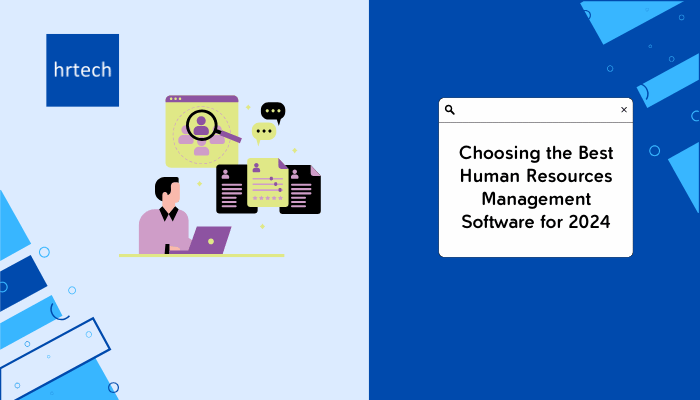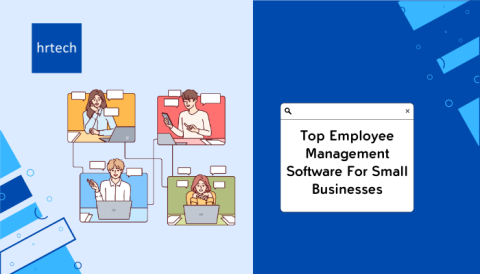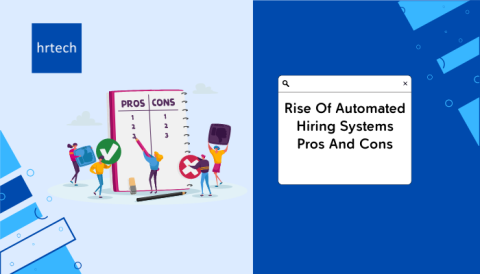As businesses continue to evolve and grow, the management of human resources becomes increasingly complex. HR professionals are challenged to handle a wide range of tasks, from recruitment and onboarding to payroll and benefits administration. This is where Human Resources Management Software (HRMS) comes into play, providing a unified solution to streamline these essential HR functions. Organizations can improve efficiency, ensure compliance, and empower their workforce with the right HR software. In this article, we will explore the advantages of HR software and highlight the best solutions available in 2024.
One of the primary benefits of HR software is its ability to integrate and unify essential HR functions. Rather than relying on separate systems for recruitment, onboarding, payroll, and benefits administration, HR software provides a centralized platform that brings all these functions together. This integration not only saves time and effort but also improves data accuracy and reduces the risk of errors. With a unified HR system, HR professionals can access employee data, track performance, manage benefits, and generate reports all in one place. This streamlines processes, increases efficiency, and allows HR teams to focus on strategic initiatives rather than administrative tasks.
Advantages of HR Software:

HR software offers a multitude of advantages for organizations of all sizes. Firstly, automation is a key feature of HR software, enabling the automation of repetitive and time-consuming tasks such as data entry, leave management and performance evaluations. By automating these processes, HR professionals can save valuable time and allocate their efforts toward more strategic activities.
Secondly, HR software ensures compliance with laws and regulations. With ever-changing employment laws, it is crucial for organizations to stay updated and maintain compliance. HR software provides built-in compliance features, such as automated tax calculations and benefits enrollment, which ensures that organizations adhere to legal requirements.
Lastly, reporting capabilities are another significant advantage of HR software. HR professionals can generate comprehensive reports on various aspects, including employee performance, turnover rates, and diversity metrics. These reports help organizations make data-driven decisions, identify areas for improvement, and monitor progress toward strategic goals.
Best Human Resources Software Solutions for 2024:
Transforming HR through Agile Workforce Solutions
hrtech:
Visit the hrtech Marketplace and explore the largest curated marketplace of HR technology solutions. Our HR Technology marketplace acts as a hub for cutting-edge technologies, tools, and resources, allowing you to optimize HR functions, enhance productivity, and drive business growth. We bring together a diverse ecosystem of trusted providers, offering innovative tools and services to optimize your HR functions, streamline processes, and drive organizational success.
ADP Workforce Now:
ADP Workforce Now is a leading HR software solution that caters to businesses of all sizes. With its robust set of features, ADP Workforce Now offers a comprehensive solution for managing HR processes. From recruitment and onboarding to payroll and benefits administration, this software covers all aspects of HR management. ADP Workforce Now also provides powerful reporting and analytics capabilities, enabling organizations to gain valuable insights into their workforce.
Pros of ADP Workforce Now:
Comprehensive HR management features
Scalable for businesses of all sizes
Robust reporting and analytics capabilities
Cons of ADP Workforce Now:
Complex setup and configuration process
Higher price point for smaller businesses
Rating: 4/5
SAP SuccessFactors HXM:
SAP SuccessFactors HXM is an enterprise-level HR software solution designed specifically for large organizations. This software offers a comprehensive suite of HR modules, including recruitment, performance management, learning and development, and succession planning. SAP SuccessFactors HXM also provides global support for regulatory compliance across multiple countries, making it an ideal choice for multinational corporations.
Pros of SAP SuccessFactors HXM:
A comprehensive suite of HR modules for large enterprises
Global support for regulatory compliance
Integration with other SAP solutions
Cons of SAP SuccessFactors HXM:
A steeper learning curve for implementation and customization
Higher price point for small to midsize businesses
Rating: 4.2/5
Rippling:
Rippling is a top-notch HR software solution tailored for midsize companies. With its intuitive interface and wide range of features, Rippling simplifies HR processes and enhances employee experience. This software covers various HR functions, including payroll, benefits administration, time and attendance tracking, and employee onboarding. Rippling also offers seamless integrations with other business applications, such as accounting and project management software.
Pros of Rippling:
Intuitive interface for easy navigation
Comprehensive HR features for midsize companies
Seamless integrations with other business applications
Cons of Rippling:
Limited customization options compared to some competitors
Additional fees for certain integrations
Rating: 4.3/5
Gusto:
Gusto is a comprehensive HR software solution specifically designed for startups. This software covers HR essentials such as payroll, benefits administration, and employee onboarding. Gusto also offers a range of additional features, including time tracking, compliance support, and employee engagement tools. With its user-friendly interface and affordable pricing, Gusto is an excellent choice for startups looking to streamline their HR processes.
Pros of Gusto:
User-friendly interface for easy implementation
Comprehensive HR features for startups
Affordable pricing plans
Cons of Gusto:
Limited scalability for larger organizations
Some advanced features may require additional fees
Rating: 4.3/5
Types of HR Software:

When choosing HR software, it is essential to understand the different types available. The two primary categories of HR software are:
Core HR Software:
Core HR software encompasses essential HR functions and includes modules such as Human Resources Information System (HRIS), Human Resources Management System (HRMS), and Human Capital Management (HCM) software. These systems provide a centralized platform for managing employee data, recruitment, onboarding, and benefits administration.
Function-Specific HR Software:
Function-specific HR software focuses on specific HR processes, such as recruiting, onboarding, payroll, and performance management. These software solutions provide specialized features to streamline and enhance specific HR functions.
Benefits of HR Software:
Implementing HR software offers numerous benefits for organizations. Here are some key advantages:
- Efficiency Through Automation: Automation is a significant advantage of HR software. By automating repetitive tasks, such as data entry, leave management, and performance evaluations, HR professionals can save time and allocate their efforts toward more strategic activities. Automation reduces the risk of errors and improves overall efficiency.
- Compliance With Laws and Regulations: HR software ensures compliance with employment laws and regulations. With built-in compliance features, such as automated tax calculations and benefits enrollment, organizations can adhere to legal requirements and avoid costly penalties. HR software also helps organizations stay updated with changing regulations.
- Reporting Capabilities: HR software provides powerful reporting capabilities, enabling organizations to generate comprehensive reports on various aspects, including employee performance, turnover rates, and diversity metrics. These reports help organizations make data-driven decisions, identify areas for improvement, and monitor progress toward strategic goals.
Adapting HR Software Features to Evolving Work Environments
In today’s rapidly changing work environments, HR software must adapt and provide features that address emerging needs. Here are some essential features to look for:
Build the Skills Needed for Future Demands: HR software should facilitate skill development and help organizations build the capabilities needed for future demands. Look for features such as learning management systems, competency tracking, and performance management tools that enable organizations to identify skill gaps and provide targeted training and development opportunities.
Model and Review Organizational Changes Easily: Organizational changes are inevitable, and HR software should support the modeling and review of these changes. Look for features that enable organizations to assess the impact of organizational changes, such as restructuring or mergers, and facilitate smooth transitions for employees.
Global Support for Regulatory Compliance Across Multiple Countries: For organizations operating in multiple countries, HR software should provide global support for regulatory compliance. Look for features that allow organizations to manage HR processes in compliance with local laws and regulations, including payroll management, benefits administration, and tax compliance.
Simplified Administration of Benefits and Compensation Packages: HR software should simplify the administration of benefits and compensation packages. Look for features that enable organizations to manage employee benefits, track time off, and automate benefits enrollment and deductions. Streamlining these processes reduces administrative burden and improves employee satisfaction.
Personalized Experiences for Workforce Productivity: HR software should provide personalized experiences for employees, enhancing their productivity and engagement. Look for features that enable organizations to tailor employee experiences, such as self-service portals, mobile applications, and personalized learning and development opportunities.
Empowering Workforce Development:
Lastly, HR software should empower workforce development and support all types of workers, including full-time, hourly, and gig workers. Here are some key features to consider:
Personalize Employee Experiences With Machine Learning: HR software can leverage machine learning to personalize employee experiences. Look for features that use predictive analytics and machine learning algorithms to recommend personalized learning and development opportunities, career paths, and performance improvement strategies.
Support for All Types of Workers: HR software should support all types of workers, including full-time, hourly, and gig workers. Look for features that enable organizations to manage workforce diversity, track time and attendance, and provide flexible scheduling options.
Detailed Understanding of Worker Profiles for Growth: HR software should provide a detailed understanding of worker profiles to support growth and development. Look for features that enable organizations to capture and analyze employee data, including skills, performance, and career aspirations. This information can inform talent management strategies and facilitate targeted employee development.
Conclusion:
Choosing the right HR software is essential for organizations looking to streamline their HR processes, ensure compliance, and empower their workforce. In this article, we explored the advantages of HR software and highlighted the best solutions for 2024, including hrtech, ADP Workforce Now, SAP SuccessFactors HXM, Rippling, BambooHR, and Gusto. We also discussed the different types of HR software, the benefits it provides, and the features organizations should look for to adapt to changing work environments.
By selecting the best HR software solution for their needs, organizations can optimize their HR operations and drive long-term success. To explore the capabilities of our recommended HR software solution, visit hrtech company’s website and revolutionize your HR management.




